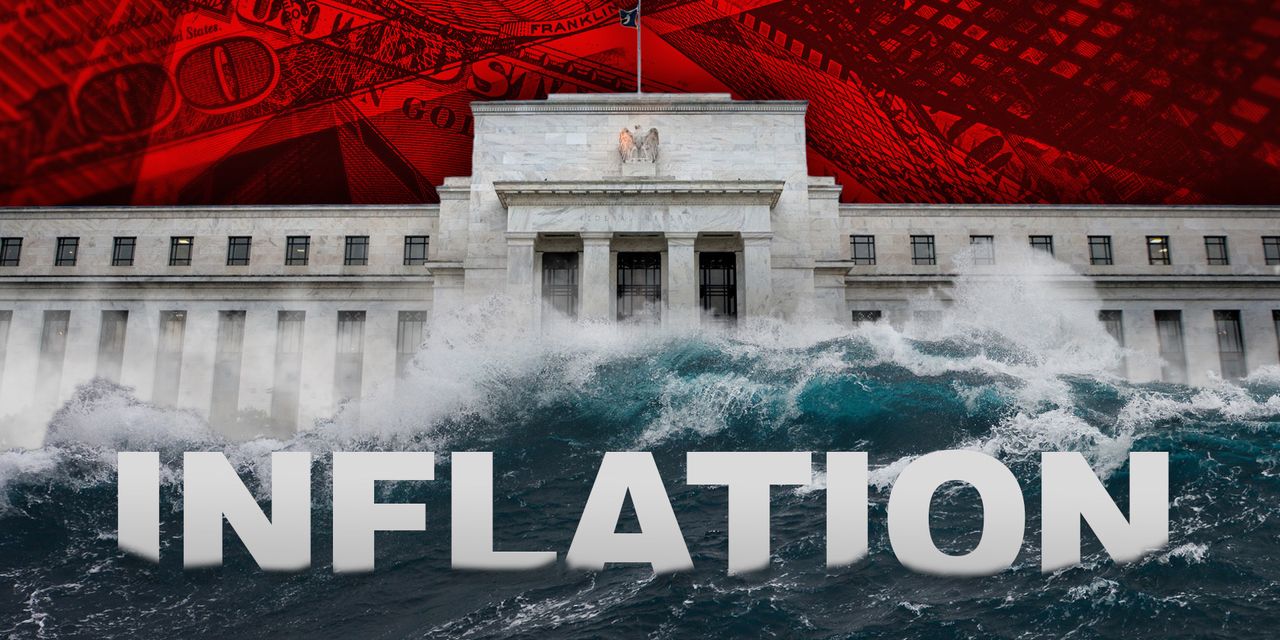Unrelenting inflation has dashed hopes for a quick pivot away from aggressive interest rate hikes by the Federal Reserve, which in turn is undermining the U.S. corporate earnings outlook for 2023 and fueling debate about whether the next major financial crisis might be on the way.
September’s hotter-than-expected consumer-price index report, which included the seventh consecutive 8%-plus annual headline inflation rate, left little doubt that persistent price pressures are here to stay through at least year-end. Economists and traders are now putting a 5% fed-funds rate target on the map for next year, a level seen as having negative ramifications for corporate earnings and the stock market. It might also raise concerns over a possible meltdown in markets and the economy on the scale of the 2007-2009 Great Financial Crisis and recession.
As the third-quarter bank earnings season kicked off on Friday — with announcements by JPMorgan Chase & Co. JPM, Citigroup Inc. C, Wells Fargo & Co. WFC and Morgan Stanley MS — there was still a modicum of hope that other corporate results might hold up for now. Stocks also managed to pull off a shocking rally on Thursday despite September’s hot inflation reading, which analysts attributed to short-covering by investors following a six-session selloff that left the S&P 500
SPX,
at its lowest close since November 2020 on Wednesday.
Read: Why stocks scored a historic bounce after another hot inflation report and Thursday was ‘one of the craziest days of my career’ in markets, says BlackRock’s Rick Rieder
Still, “everyone understands that earnings estimates for next year — with 8% being the consensus estimate for 2023 earnings growth compared to 2022 — are kind of fantasy at this point,” said Dan Eye, chief investment officer at Fort Pitt Capital Group in Harrisburg, Pa., which oversees $5 billion in assets. “I don’t think any strategist or analyst who follows the market closely really anticipates that earnings are going to hold up into 2023. We are in a situation where it’s a matter of how far they need to be marked down.”
Meanwhile, the S&P 500 index continues to trade in “a falling channel” that’s been in place since mid-August, according to Fiona Cincotta, a senior financial markets analyst at City Index in London. Friday’s drop below 3,600 in the S&P 500 keeps sellers “hopeful of further downside,” while a break below 3,490 would open the door to the 3,390 level reached in February 2020, she said.

Source: City Index
The September CPI report “confirms fears that inflation is much stickier and much more embedded in the economy than perhaps we thought beforehand and that the process to lower inflation is going to be much longer than initially expected,” Cincotta said via phone. “That means the Federal Reserve will need to hike rates more aggressively for longer, which is going to be bad news for economic growth and means a recession is more likely.”
Equities are trading at levels that imply “a more aggressive Fed and higher interest rates for a longer period of time.” With stock prices still 17.8 times per-share earnings by her estimates, though, Cincotta sees a “good chance” of another 10% drop in equities over the next few months as earnings on consumer-discretionary companies get hit especially hard. She said the S&P would need to get back above 3,800 for her to change her mind.
“It does feel like worst-case scenarios are being brought forward and that we are just in this downward spiral right now,” she said.
Granted, corporate earnings generally managed to hold up better than expected during the second quarter, with companies like eBay Inc.
EBAY,
and Best Buy Co.
BBY,
producing healthy results. Similar strength was also seen in the third-quarter results of PepsiCo
PEP,
released on Wednesday, which revealed consumers remained willing to pay more and offered hope that other earnings reports might turn out better than feared.
What’s changed after September’s CPI, however, is that there’s “indisputable evidence now that inflation is not coming off,” said Thomas Simons, a money market economist for Jefferies in New York.
In a note, he and colleague Aneta Markowska wrote that hopes for a peak in inflation and a Fed pivot “were completely wiped out by the September CPI report.” They also reiterated their call for a 5.1% terminal rate, or level at which the Fed will likely end its rate-hike campaign. Via phone, Simons said that “I wouldn’t rule out the outside risk that rates will need to get above inflation.”
For John Silvia, founder and chief executive of Dynamic Economic Strategy in Captiva Island, Fla., a 5% fed-funds rate would translate into “a pretty high discount factor in terms of equity markets, and adds another 75 to 100 basis points on mortgage rates.”
“The cost of financing is going to be difficult and there will be a lot less options,” Silvia, the former chief economist at Wells Fargo Securities LLC, said via phone.
And it’s not just publicly traded markets like stocks that will feel the hit, he said. So will hidden, secondary markets like the one for collateralized loan obligations, which “were developed in the last couple of years and were never priced to a fed-funds rate at 5%.”
Next week’s U.S. economic calendar has a dearth of major market-moving releases. Monday brings the release of the Empire State manufacturing index for October. That’s set to be followed on Tuesday by industrial-production and capacity-utilization data, along with the NAHB home builders’ index.
On Wednesday, September data on building permits and housing starts is scheduled to be released, along with the Fed’s Beige Book report. Thursday brings weekly jobless claims, existing home sales, the Philadelphia Fed manufacturing index, and leading economic indicators.
On Friday, a third-quarter index of common inflation expectations will be released.



